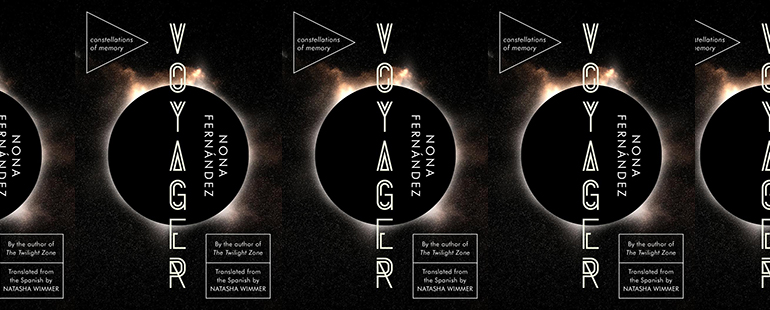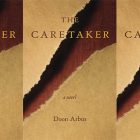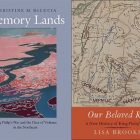The Depth of Memory in Nona Fernández’s Voyager

Voyager
Nona Fernández
Graywolf Press | February 21, 2023
Nona Fernández’s essay collection Voyager, translated by Natasha Wimmer, opens with an emotional scene. Fernández accompanies her mother, who is nearing eighty, on a trip to the doctor. Her mother has been fainting—losing consciousness for moments or minutes—and the doctor performs a series of tests, including a scan of brain activity. Watching the monitors light up as her mother recalls a happy time, Fernández sees stars bright on the screen, drawn together in the constellation of a memory. This compelling image is central to this opening essay, and it serves as both a catalyst and touchstone for the rest of the collection. Throughout Voyager, Fernández delves into this link between stars and memory in her life, in astronomy, and in her cultural imagination. As she explores these connections through scientific research, historical events, and personal experience, Fernández prompts readers to reflect on the central connection: how the vastness of the universe and the depth of our memories shape our understanding of what it is to be human.
From the image of her mother’s brain scan, Fernández reflects on learning about stars. She recalls the stories her mother shared when she was younger—the constellations she saw on a trip to the Atacama Desert, and the details from an astronomer guide on the light appearing from stars long dead. This essay serves as an anchor for the collection, surfacing other themes throughout the collection, including motherhood, family, inheritance, as well as the connections between the past and the present. It also exemplifies the writer’s ability to tease out disparate threads based on an image or a line and probe for meaning that makes the whole greater than the sum of its parts. As she pulls together the threads on the creation of stars, her own childhood memories of her mother explaining the night sky, and her mother’s brain scan, Fernández draws a beautiful connection in an aphorism: “light from the past illuminates our present.”
And Fernández takes the consideration of the past influence on our present further. The Atacama Desert, Fernández explains, is recognized worldwide as the best site for stargazing, and it is home to more than a dozen observatories to take advantage of the ideal conditions. This same location is the site where, under the military dictatorship in the 1970s, the Caravan of Death killed twenty-six people. Fernández, a Chilean writer, includes multiple essays in Voyager following her experience signing a petition to rename twenty-six stars in memoriam, becoming a godmother to one of the stars, meeting the widow of the man her star honors, and crying with the group of people gathered in the Atacama Desert at the dedication ceremony. By exploring her experience, Fernández imbues the collection and the present moments of these pieces with stories of the past.
Within this structure, Fernández also displays how memories work. We experience the moment, then we experience the memory of the moment, then our new experiences and feelings build on this memory. The structural choice is lovely, as it allows Fernández to introduce topics and images, to tease out the threads, and to reshape our initial impressions. But this choice is also meaningful: as Fernández conveys, we’re steadily moving farther and farther away from both our experiences and our memories. The implication looms large, like the stars in the desert sky: We’re steadily moving farther away from our singular existence in the universe. Fernández imbues meaning with similar stylistic choices within essays, including the use of lists, repetition, and select touchstone imagery. The Atacama Desert and Fernández’s mother’s brain scan are merely two examples of images that the writer references throughout the essays in Voyager, reminders that the writer is leading us through her collection with purpose, that Fernández is exploring the connections between stars and memory to explore what it means to be human.
Perhaps because Fernández self-consciously packages this meaning for us, writing about writing this book, she ends the collection with a reflection on the project and her journey writing the collection. In this essay, she includes a few seemingly simple comments on the book as a written object, now and in the distant past: “A book is a space-time capsule. It freezes the present and launches it into tomorrow as a message.” The essays in Fernández’s collection cover a lot of ground, weaving from the personal to the profound, from the historical to the mystical, from the scientific to the spiritual. But with the recurring images, thoughtful structure, and the compelling connections between science and history and more, Voyager has one fundamental message: to hold the past is what makes us human. Fernández launches this book at us to remind us of this fact and to urge us, above all, to remember.



